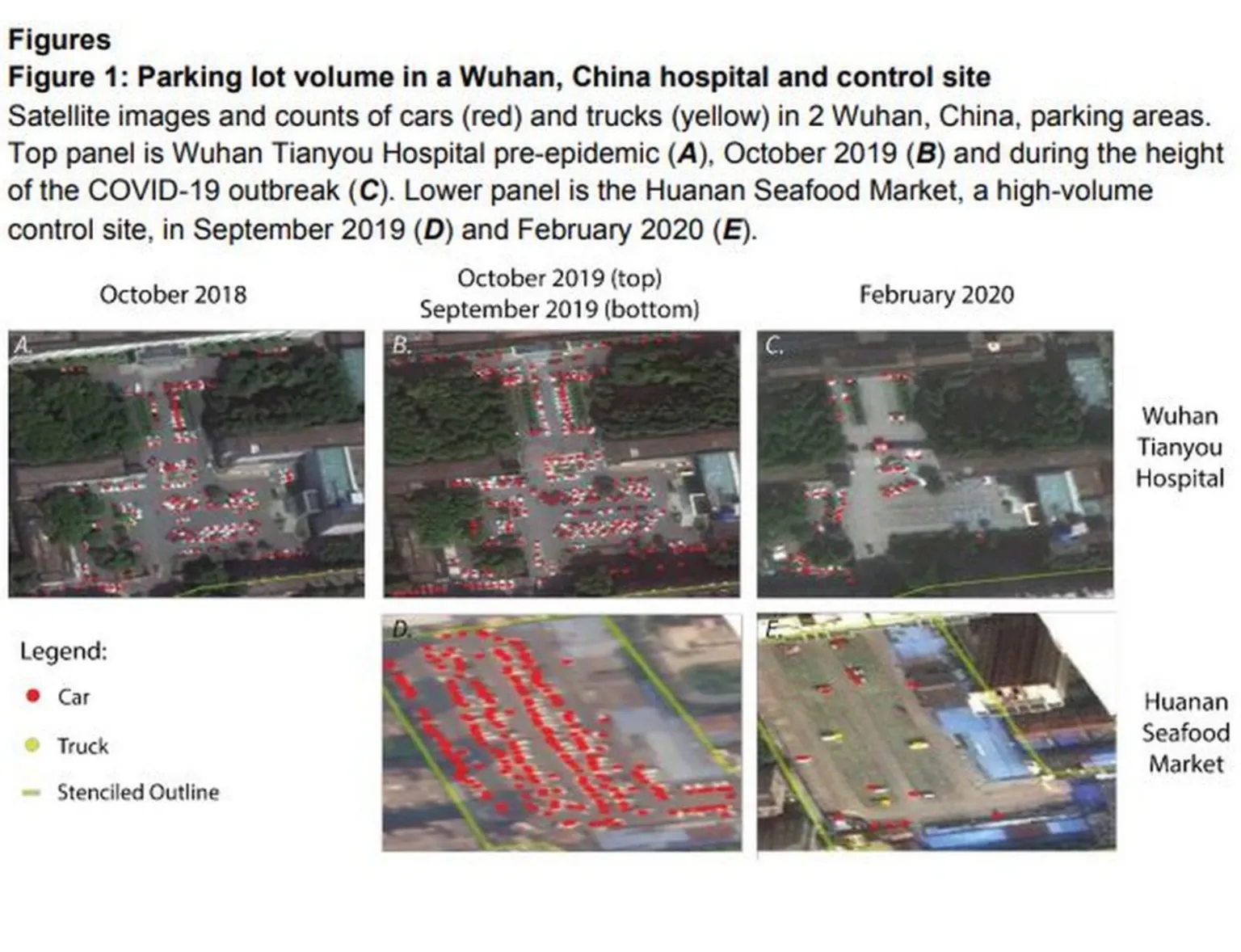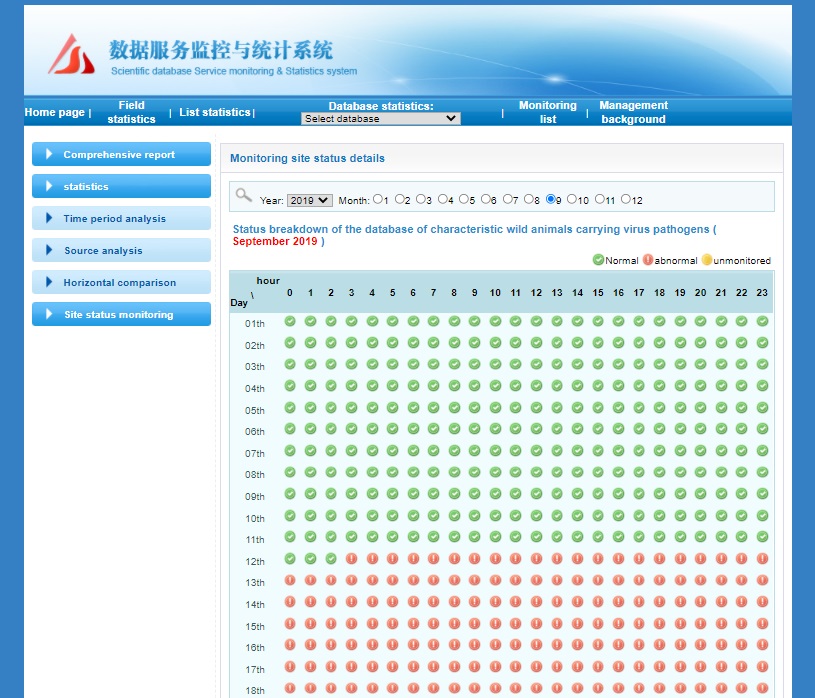Two quick points upfront. There is a possibility the removal of the database was totally innocent, though at this point that explanation seems to be receding faster than Hubble's red shift.
And the second issue, the writer refers the Harvard DASH study of parking lots and internet searches. This study has been savaged by other researchers. Most of the problem lies with the inclusion of the internet search terms and probably should not have been bundled up with the parking lot photos.
Regarding the latter, the chief criticism has been the fact there are shadows cast by trees and buildings. Here is one of the critiques via the BBC:
...What about the number of cars?
Across the six hospitals, the Harvard study reported a rise in cars in hospital parking lots from August to December 2019.
However, we've found some serious flaws in their analysis.

The report states that images with tree cover and building shadows were excluded to avoid over or under-counting of vehicles.
However, satellite images released to the media show large areas of hospital car parks blocked by tall buildings which means that it's not possible to accurately assess the number of cars present.
To show this, we've selected two of these images taken at different times of the Hubei Women and Children Hospital.
The first is of the healthcare centre in October 2018 - and we've marked with white boxes the parking area obscured by buildings....
....MUCH MORE
Well duh. The Harvard researchers were not offering proof that covid-19 was circulating earlier than the Chinese Communist Party/Government has claimed, just that there is reason to think it might have been. The criticism that we can't see certain parts of the parking lots brings to mind my Grandmother's comment: "You have a remarkable grasp of the obvious," to which I'd respond "I'm this many ||||, four".
From Pandemic Timeline:

On September 12, 2019 the WIV’s online, public database of samples and virus sequences was taken offline in the middle of the night between 2:00AM and 3:00AM local time. The database contained more than 22,000 entries consisting of sample and pathogen data collected from bats and mice. The database contained key information about each sample, including what type of animal it was collected from, where it was collected, whether the virus was successfully isolated, the type of virus collected, and its similarity to other known viruses.
To date, there has been no consistent answer provided as to why the database was removed or when or if it will be put back online.
Shi is listed as the data correspondence author for the project. When questioned about the database being taken offline, Shi has given several conflicting answers. During a December 2020 interview with BBC, Shi said the database was taken offline for “security reasons” after cyberattacks against the work and personal emails of WIV staff. She also insisted that WIV virus sequences were saved in the GenBank database, run by the National Center for Biotechnology Information. Shi stated, “It’s completely transparent. We have nothing to hide.”
In a January 26, 2021 email to someone inquiring about the database, however, Shi stated the database was taken down due to cyberattacks “during [the] COVID-19 pandemic.” She also claimed that researchers had “only entered a limit[ed] data in this database” despite it having more than 22,000 entries.
…
Around the time the WIV’s virus database went offline, car traffic at hospitals in downtown Wuhan began to increase. Researchers from Boston University School of Public Health, Boston Children’s Hospital, and Harvard Medical School used satellite imagery to examine parking lot volume of hospitals in Wuhan for the two and a half years prior to December 2019. They found that five of six hospitals analyzed had the highest relative daily volume of cars in the parking lot in September and October 2019, before the first reported cases of COVID-19.
When people get sick, they are likely to seek healthcare near their home or work. Each of the hospitals that saw a rise in traffic with patients complaining of COVID-19 symptoms are located within 6.5 miles of the WIV Headquarters and are connected by public transit lines. The below map shows the location of the WIV Headquarters (in red) and the six hospitals (in blue) which experienced increase vehicle traffic in September and October 2019....
....MORE (footnotes)
Additionally there are hints, again not proof, that the coronavirus was circulating in Italy as early as August - September 2019. If the above is true the question becomes who knew? Which then becomes: was this a profit-making opportunity?